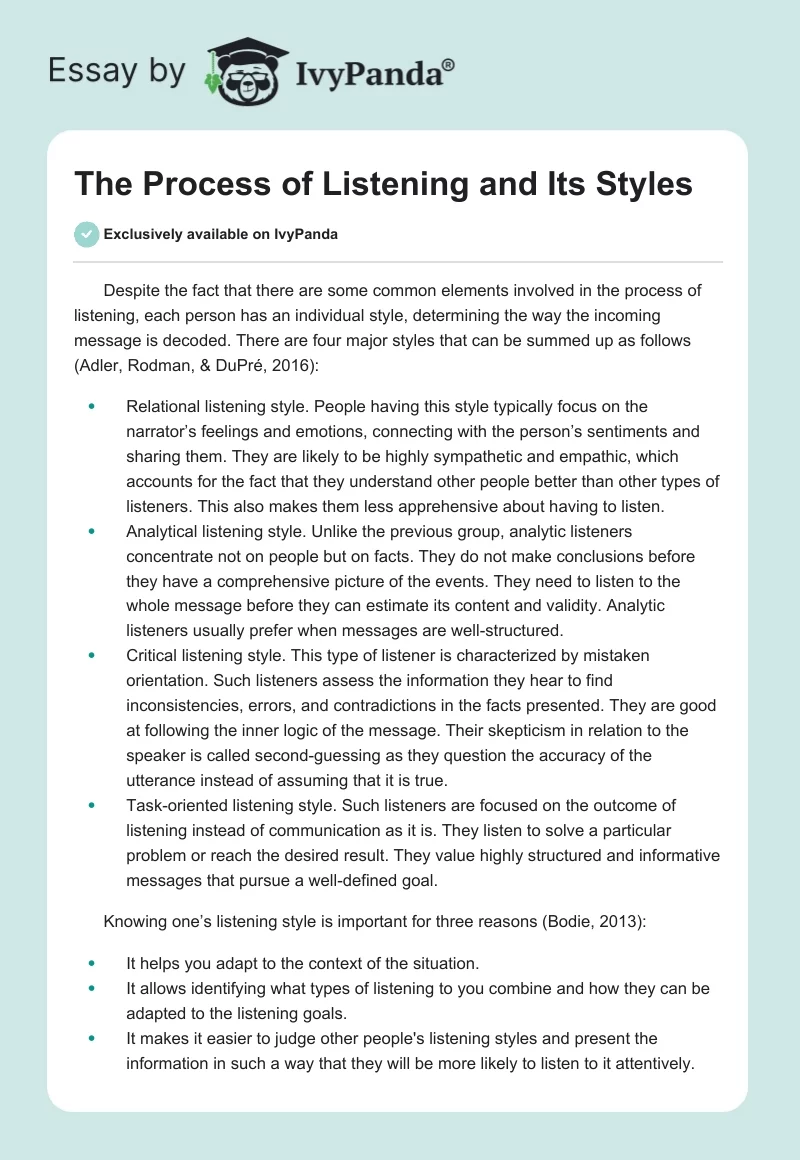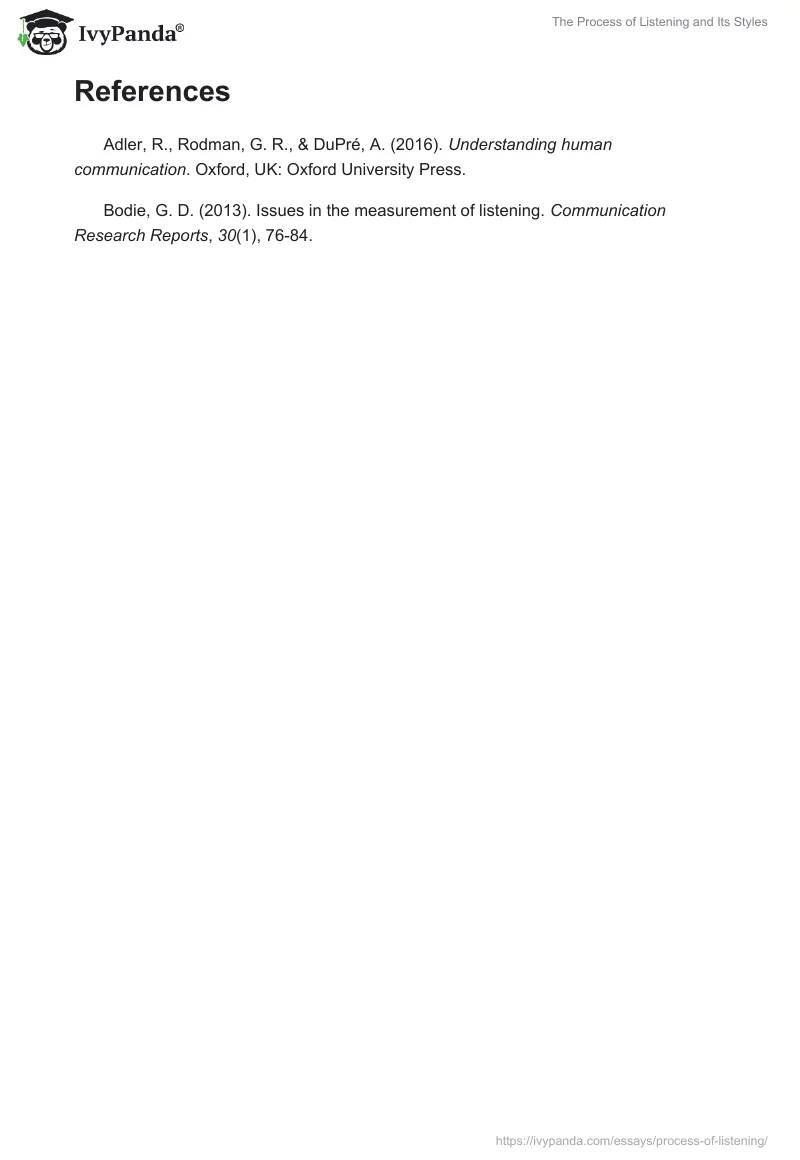Despite the fact that there are some common elements involved in the process of listening, each person has an individual style, determining the way the incoming message is decoded. There are four major styles that can be summed up as follows (Adler, Rodman, & DuPré, 2016):
- Relational listening style. People having this style typically focus on the narrator’s feelings and emotions, connecting with the person’s sentiments and sharing them. They are likely to be highly sympathetic and empathic, which accounts for the fact that they understand other people better than other types of listeners. This also makes them less apprehensive about having to listen.
- Analytical listening style. Unlike the previous group, analytic listeners concentrate not on people but on facts. They do not make conclusions before they have a comprehensive picture of the events. They need to listen to the whole message before they can estimate its content and validity. Analytic listeners usually prefer when messages are well-structured.
- Critical listening style. This type of listener is characterized by mistaken orientation. Such listeners assess the information they hear to find inconsistencies, errors, and contradictions in the facts presented. They are good at following the inner logic of the message. Their skepticism in relation to the speaker is called second-guessing as they question the accuracy of the utterance instead of assuming that it is true.
- Task-oriented listening style. Such listeners are focused on the outcome of listening instead of communication as it is. They listen to solve a particular problem or reach the desired result. They value highly structured and informative messages that pursue a well-defined goal.
Knowing one’s listening style is important for three reasons (Bodie, 2013):
- It helps you adapt to the context of the situation.
- It allows identifying what types of listening to you combine and how they can be adapted to the listening goals.
- It makes it easier to judge other people’s listening styles and present the information in such a way that they will be more likely to listen to it attentively.
References
Adler, R., Rodman, G. R., & DuPré, A. (2016). Understanding human communication. Oxford, UK: Oxford University Press.
Bodie, G. D. (2013). Issues in the measurement of listening. Communication Research Reports, 30(1), 76-84.


